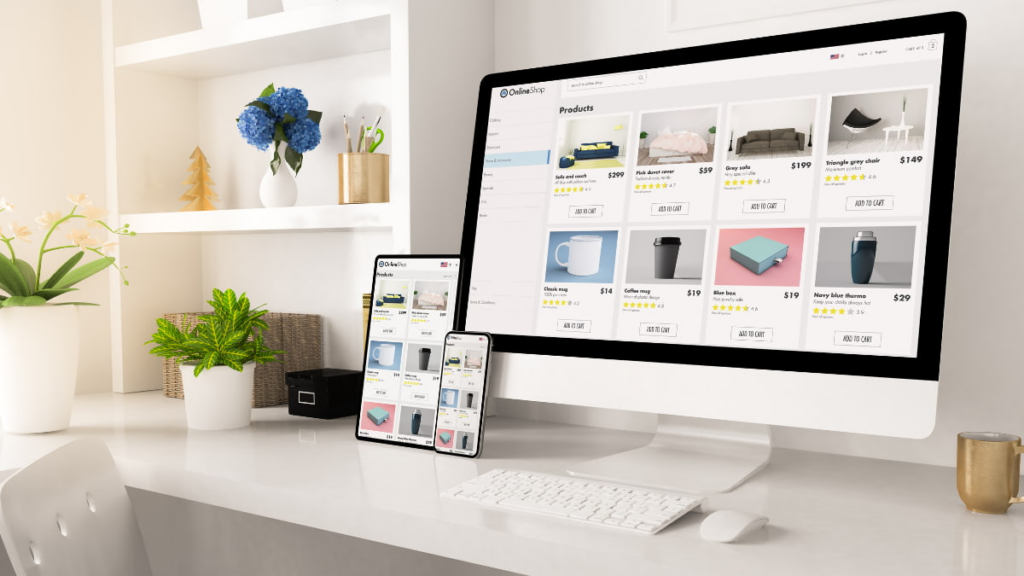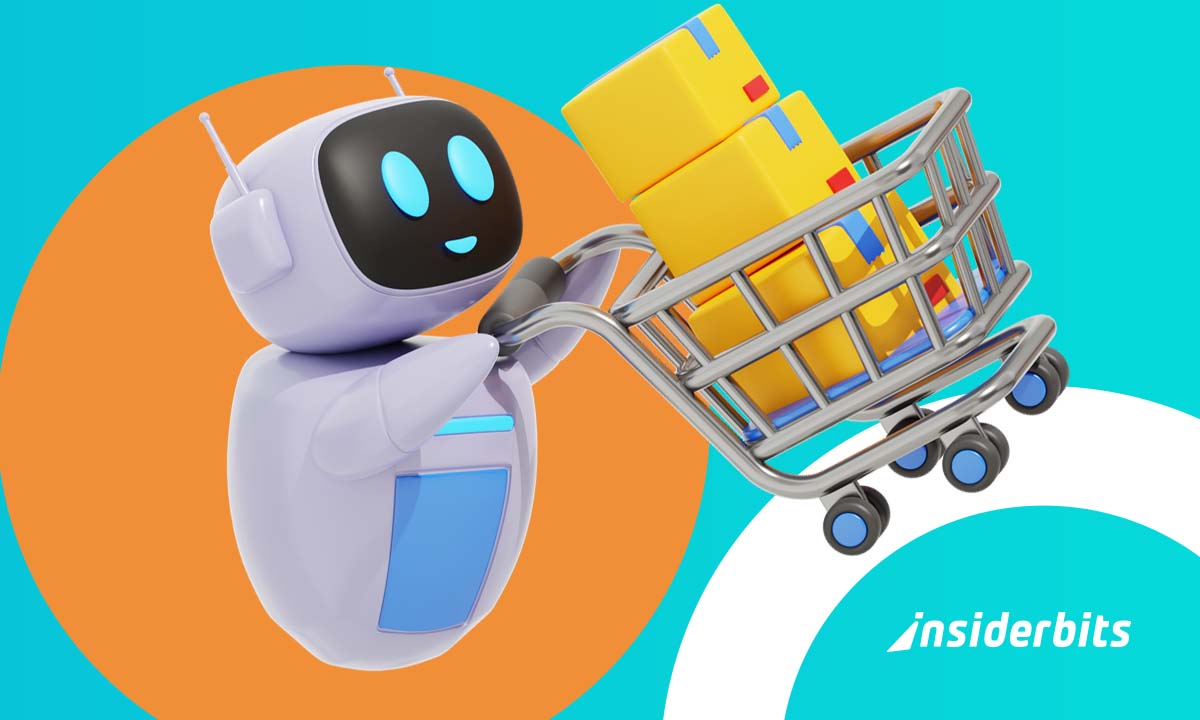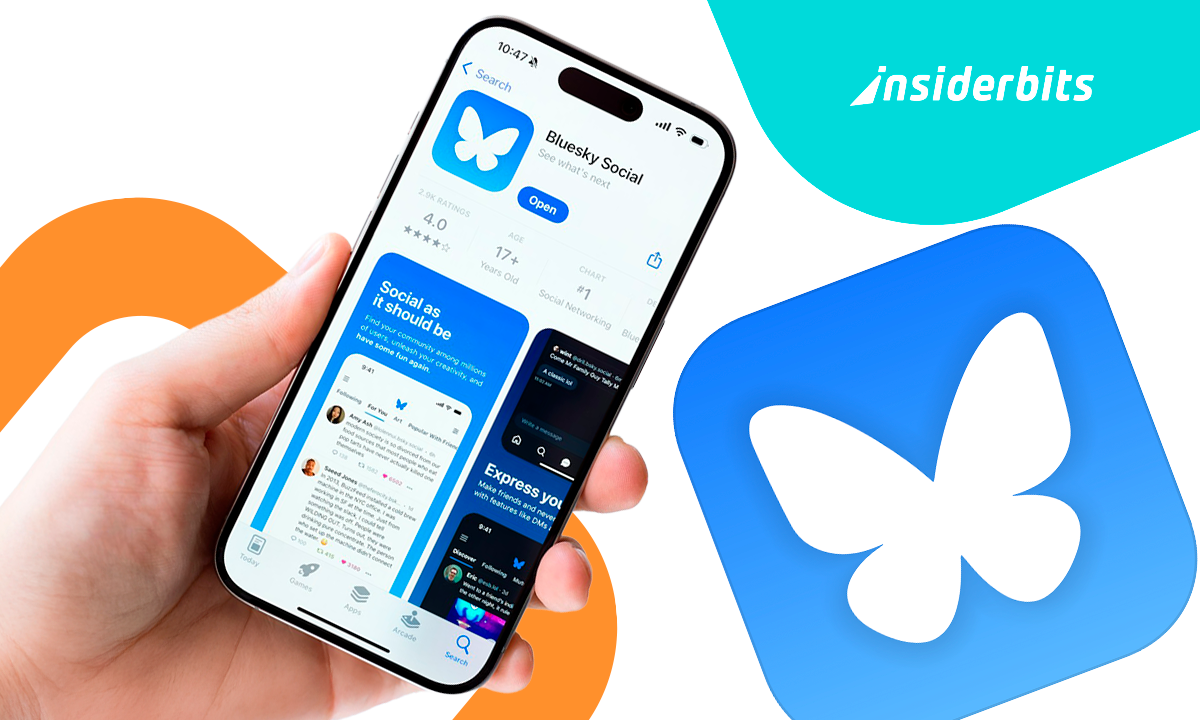Shopping looks different these days, with AI-powered shopping shaping what we see and buy. From tailored recommendations to pricing tactics, technology is changing retail fast.
Retailers analyze habits, predict trends, and adjust prices instantly using AI. These smart tools promise convenience, but do they truly help or just encourage impulsive spending?
In this guide by Insiderbits, you’ll learn how AI influences shopping decisions, from product suggestions to marketing strategies. Keep reading to uncover what’s behind the screen!
Correlato: Le 5 migliori applicazioni mobili per le offerte di shopping online
How AI-Powered Shopping Is Transforming Retail

Retail is shifting quickly, and AI is leading the charge. Stores are getting smarter, learning from customer behavior to improve how products are displayed and sold.
Online platforms are becoming just as responsive. AI tracks browsing habits and adjusts what you see, making the experience feel curated, even during casual scrolls.
In both spaces, AI-powered shopping has become a quiet force—one that blends convenience with subtle influence, changing how people interact with products without realizing it.
AI Tech Inside Physical Stores Today
Smart shelves now detect stock levels instantly, signaling when to restock or rearrange. This keeps high-demand items in place and reduces human error.
Facial recognition tools and movement sensors help stores adapt layouts in real time. Promotions can shift depending on where people spend the most time.
What feels like a normal aisle stroll might actually be part of a larger AI-powered shopping design, built to react to shopper patterns moment by moment.
Virtual Assistants Guiding Online Shoppers
Shopping bots are no longer basic. They answer questions, offer personalized help, and even suggest bundles based on your cart and recent browsing history.
Some virtual assistants go beyond support, guiding users through entire purchases with voice commands, chatbot interactions, or smart push notifications on mobile devices.
AI-powered shopping relies on these assistants to create a more natural online experience—fast, friendly, and shaped by what the system already knows about you.
Predictive Inventory and Customer Flow Tools
Today’s systems can anticipate sales patterns based on local weather, holidays, or social media trends, giving retailers a head start on demand spikes.
In-store sensors monitor foot traffic and shopping flow, helping managers reorganize shelves or redirect staff at just the right moments.
While shoppers focus on finding deals, AI-powered shopping tools are already working behind the scenes, streamlining inventory and optimizing space with impressive precision.
The Smartest Shopping Apps That Use AI in 2025

Shopping apps are getting sharper in 2025, using intelligent features to anticipate needs, boost savings, and deliver faster, more personal experiences across every screen.
From major retailers to rising startups, many apps now adapt in real time—adjusting recommendations, prices, and offers based on behavior, timing, and even your location.
ShopSavvy
3.2/5
ShopSavvy makes price comparison easy. You can scan a barcode or search for a product, and the app quickly finds the best deals online and in local stores.
Smart tracking features in AI-powered shopping help users catch discounts. ShopSavvy monitors prices across multiple retailers and sends alerts when costs drop.
Detailed price history and retailer comparisons make informed shopping easier. The app filters results based on preferences, so finding the right deal doesn’t require hours of searching.
Major retailers like Amazon, Walmart, and Best Buy are included, making it simple to spot savings. ShopSavvy turns price hunting into a hassle-free experience.
ShopSavvy’s Best Features
- Barcode Scanner: scan any product to instantly compare prices across online and local stores, ensuring the best deal without unnecessary searching;
- Price Drop Alerts: get notified when prices decrease on saved items, helping shoppers buy at the right moment instead of overpaying;
- Smart Price Tracking: AI-powered shopping tools analyze trends and predict discounts, giving users an advantage when looking for the lowest possible price;
- Retailer Comparisons: view side-by-side listings from major stores like Amazon, Walmart, and Best Buy, making it easier to choose where to buy.
Karma
3.9/5
Karma helps shoppers save money by tracking price drops and automatically applying discount codes. It works across various retailers, making online shopping easier and more affordable.
A built-in wishlist feature organizes saved products into categories, making it easy to track discounts. No need to refresh pages, Karma monitors deals in real time.
Smart alerts in AI-powered shopping notify users when prices drop on saved items. The app also finds and applies coupons at checkout, reducing costs effortlessly.
Supporting major brands and stores, the app integrates smoothly with popular retailers. Automated savings, price tracking, and coupon detection ensure better deals without effort.
Karma’s Best Features
- Automatic Coupon Finder: karma scans thousands of online stores and applies the best available discount codes at checkout, saving time and money effortlessly;
- Price Drop Alerts: get instant notifications when saved items go on sale, ensuring the lowest price without constantly checking multiple websites;
- Price Tracking: advanced AI-powered shopping technology monitors pricing trends, predicts future discounts, and alerts users when it’s the best time to make a purchase;
- Wishlist Organization: save and categorize favorite products in a personalized wishlist, making it easy to track deals and manage shopping lists across different stores.
Klarna
4.8/5
Klarna makes shopping more flexible by offering interest-free installment plans and pay-later options. It helps users manage purchases without the stress of upfront payments.
A built-in budget tracker helps users stay on top of spending by organizing purchases. Transparent reminders prevent missed payments and unexpected charges along the way.
The app uses AI-powered shopping insights to track spending patterns, suggest smarter payment options, and notify users about price drops, making online purchases manageable.
Klarna partners with major brands and retailers, making it easy to shop online while spreading costs over time. Convenience and financial control go hand in hand.
Klarna’s Best Features
- Flexible Payment Options: choose between interest-free installments, pay-later plans, or full payments, giving users more control over their shopping expenses;
- Price Drop Alerts: get notified when saved items go on sale, ensuring purchases happen at the right time for maximum savings and smarter spending;
- Retail Integration: Klarna partners with major brands and stores, allowing users to shop effortlessly while managing payments through an intuitive and user-friendly platform;
- Smart Insights: advanced AI-powered shopping analyzes spending habits, tracks discounts, and suggests payment options, making purchases more budget-friendly.
Correlato: Resale Shopping Apps: Sustainable Fashion at Your Fingertips
Personalized AI: How Your Data Shapes What You Buy

Every click, scroll, and purchase tells a story. AI listens closely, learning from your habits to suggest what you might want next before you even search.
That’s why recommendations often feel spot on. The system tracks how often you browse, what colors you prefer, or which items sit in your cart.
Within AI-powered shopping, personalization is more than just a feature. Your digital behavior becomes a guide that shapes how, when, and what appears in your feed.
Recommendation Engines and Purchase History
Recommendation engines rely heavily on what you have bought before. Repeat purchases, favorite brands, and even abandoned carts all shape what comes next.
Sometimes just clicking a product is enough to trigger smarter suggestions. AI finds patterns across style, size, and price based on your activity.
In AI-powered shopping, your purchase history creates a feedback loop that refines suggestions to match habits, surfacing items that feel timely and hard to ignore.
Location, Timing, and Your Shopping Mood
Where you are and when you browse influence what shows up. Weather, time of day, and shopping rhythms all factor into what appears.
Morning users may see different suggestions than evening shoppers. Special dates bring tailored product offerings tied to holidays, weekends, or local trends.
AI-powered shopping considers these details in real time, delivering results that feel natural because they are shaped by more than just your past actions.
The Ethics of AI in Retail: Are You Being Manipulated?

AI in retail doesn’t just assist—it persuades. When algorithms understand desires, timing, and habits, they start to influence buying decisions more than most people realize.
Promotions that feel spontaneous are often calculated. AI studies hesitation, taps into patterns, and uses that insight to trigger impulse buys at the perfect moment.
The rise of AI-powered shopping means decisions may feel personal, but they’re often shaped by silent systems fine-tuned to convert hesitation into purchase with precision.
Dynamic Pricing and the Urge to Buy
Prices shift constantly based on supply, demand, and user behavior. This strategy creates urgency, pushing buyers to act quickly before a perceived deal disappears.
Even the time of day can influence what price you see. Some systems even consider location or browsing history to optimize the chance of conversion.
Within AI-powered shopping, these dynamic pricing tools are designed to provoke quick reactions, making the difference between a lost sale and an instant checkout decision.
Microtargeting: Help or Hidden Pressure?
Microtargeting promises relevance, but sometimes it overwhelms. Personalized ads follow you across platforms, responding to clicks, likes, or moments of interest you barely remember.
When every ad knows your preferences, it stops feeling helpful. You’re not just seeing options—you’re being steered, sometimes before making your own decision.
As AI-powered shopping evolves, microtargeting has become more aggressive, transforming simple curiosity into a long-tail campaign that quietly follows your digital footprint everywhere.
Are These Smart Suggestions Crossing Lines?
Recommendation systems observe everything, from scrolls to abandoned carts. These cues fuel suggestions that seem thoughtful but are actually designed to spark fast purchases.
You might think you’re choosing freely, but the system already predicted your next move. Suggestions follow you across apps, email, and even your homepage.
Some AI-powered shopping experiences offer suggestions so precise they feel uncanny, raising questions about where usefulness ends and manipulation begins.
These systems learn quickly and adapt faster. What feels convenient might be calculated. So remember to take a moment before buying to decide whether it’s truly your choice.
Correlato: Virtual Reality Shopping: The Future of Retail in 2025
AI vs. Traditional Shopping: Which One Saves More Money?

Traditional shopping relies on timing, luck, and personal know-how. Deals can be great, but they often require more effort, comparison, and a bit of guesswork.
AI-based systems promise smarter decisions. They analyze data, compare prices instantly, and highlight discounts you might miss—often reducing the time spent hunting for the best deal.
In many cases, AI-powered shopping surfaces limited-time offers, alerts for price drops, and bundle deals based on preferences, offering savings that casual browsing wouldn’t uncover.
Still, smart doesn’t always mean cheaper. AI might push more items you didn’t plan to buy, using persuasive logic designed to increase cart totals subtly.
Whether saving or spending more depends on how the technology is used. Awareness, timing, and self-control still play the biggest role in your final cost.
In the Age of Smart Shopping, Stay Smarter
Shopping has changed, and that’s not a bad thing. Smart tools can help you save, discover, and shop with more confidence—if you know what’s happening.
Insiderbits put the spotlight on AI-powered shopping, showing how behind-the-scenes systems shape your experience. What you see isn’t random, and what you buy rarely is either.
Curious about what else shapes your spending habits? Stick with Insiderbits for fresh takes on tech, behavior, and the smarter side of shopping in the digital age.





